Vineyard Replant
- November 19, 2019
Farming is a never-ending work in progress. Whether we are adjusting to Mother Nature’s changing weather, combating pests, implementing new sustainable practices, replanting diseased blocks, there is always work to be done in the vineyard. It is a constant evolution.
Vineyards have a life cycle, typically about 25 years. With our 96 acres of vines, we are continually anticipating changes so as not to impact our production at Hafner Vineyard. This means winemaker, Parke Hafner, and vineyard manager, David Huebel, have long-term plans for replanting vineyard blocks. They typically plan ten years in advance. Then two years before, the work begins.
After Harvest 2018, we removed 10 acres of vines and began the process of replanting Cabernet Sauvignon, Malbec and Petit Verdot. A yearlong project, Parke, David and the vineyard team can now catch their breath with the new vines in the ground and growing happily. We interviewed Parke and David to get their perspectives on the replant and share the process with you.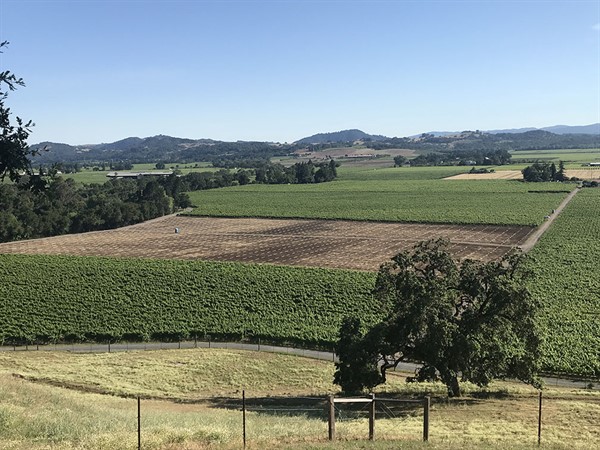
Why did you decide to replant?
Parke: A vineyard is constantly evolving. This block was replanted because the existing vines were older and diseased, so the quality and quantity of the grapes were decreasing, so we pulled them out.
Why did you choose to plant Cabernet Sauvignon, Malbec and Petit Verdot?
Parke: Alexander Valley is well suited for those Bordeaux varieties. We use all three in our two red wines, so having an excess of them ensures that we have enough for ourselves. The rest we can sell to other wineries. Alexander Valley Cabernet Sauvignon, in particular, has a good reputation which continues to grow.
What is the general process for a replant?
David: Two years prior to pulling the vineyard out, we applied for a permit from the county for the project. Shortly after, we decided which rootstocks and scions we would plant. At which point, we found them from a nursery. This replant required us to select the “green growers” (scions grafted to rootstocks that have leaves and are ready to grow) from three different nurseries. The coordination of that was a bit challenging. Around the same time, we selected the trellis style and received bids from various companies to assist in that layout.
After Harvest, a contractor came to bulldoze the vineyard. He then ripped the soil over 3 feet deep and in 3 directions. We disced the surface, so it was smooth. Then we planted cover crop. (Learn more about cover crop here.) In the Spring, we cultivated the cover crop in the ground. Now the block was ready!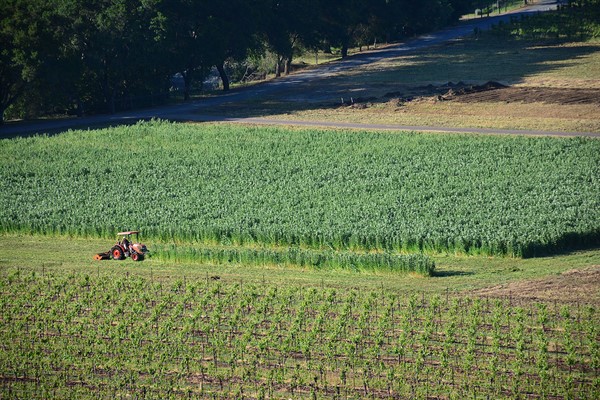
This was the first time that we used a professional vineyard company to lay the rows using GPS. Another company came to install stakes and planting rods.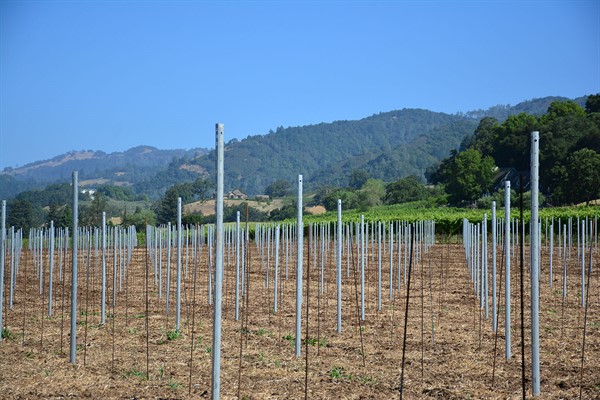
We installed irrigation – the main line into sub-main and individual hoses to each line. We hung the wire for the drip hose and later attached the drip hose to it. Then we installed individual emitters to each vine. Lots of work and coordination to get water to the vines!
A team came to plant the vines.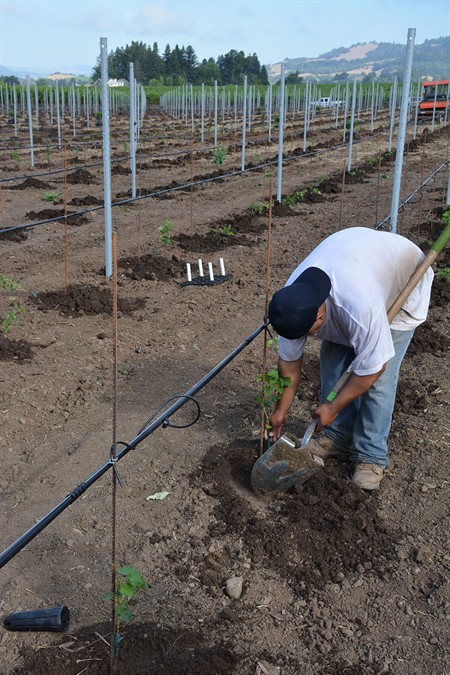
Then they slipped them into “grow tubes”, so they are protected from hungry rabbits or deer. We watered them daily and then waited anxiously for them to grow.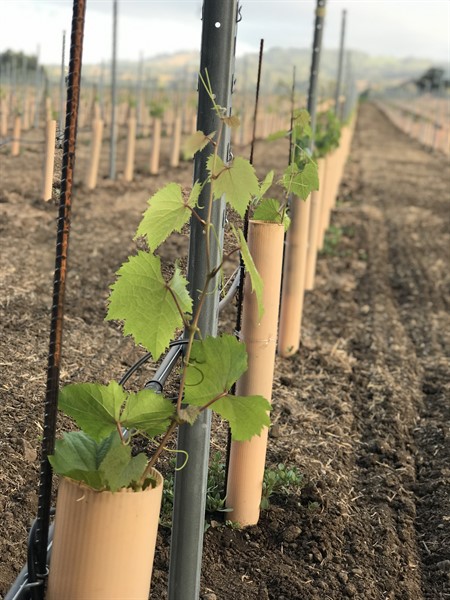
What was the most exciting part of the replant?
Parke: Seeing the new vines peek out over the grow tubes. (Although the most frustrating part is now that they are above the grow tubes, the deer have discovered them and started to nibble the tender leaves.)
David: Turning on the water the first time. Check out a video I took here.
What was the most challenging part of the replant? (Notice how they both gave two answers…)
Parke: The first was getting the proper amount of planting material. We sourced from three different nurseries, and they didn’t deliver them all on time. The other challenge was finding the labor to help with various aspects of the project.
David: Installing the main irrigation system and digging the trenches for it since I did that myself. Oh and burning the vines last Winter was tough because they were covered in dirt, and the rain didn’t help.
We received many fun questions about the replant from Instagram. Here are just a few of them…
What kind of trellis systems will be used? How will we train them?
They are on 5’ x 8’ spacing. (Five feet between the vines, and eight feet between the rows.) They will be cane pruned, probably trained in VSP (vertical shoot positioning).
What is the soil type?
Clay loam
Where is the replant?
The Old Mill Block Chardonnay and the Fox Block Cabernet Sauvignon.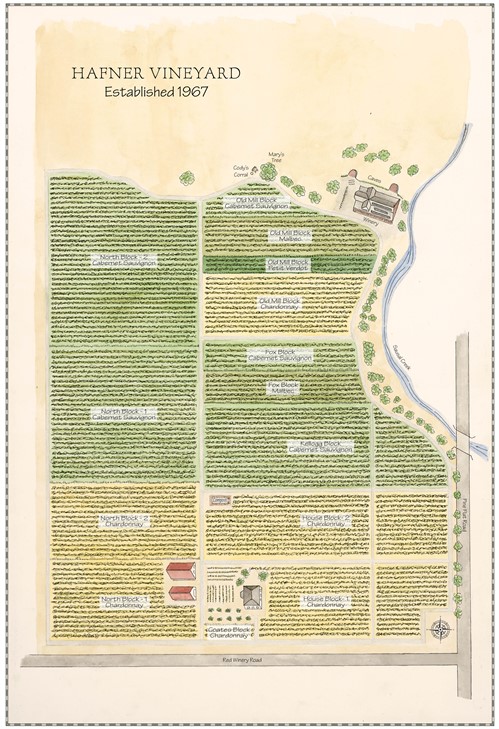
Are you going to graft?
No, we used green growers, so the vines came grafted onto rootstock.
What clones are you using?
Cabernet Sauvignon: Clone 4.1
Malbec: Clone 596.1
Petit Verdot: Clone 2.1
Most people figure that the life expectancy of a vineyard is 25 years. Although it’s a big decision to take a block out of production for four years, winemaking is a very long-term project. While it’s a daunting (and time-consuming) job, doing this allows us to ensure that we produce the highest quality wine possible. Harvest 2023 will be exciting! This block will be in full production by then. These grapes will reach your glass in 2028… 10 years from when we started the project!
Over the year, we took photos from the same vantage point to see the progression of the replant.
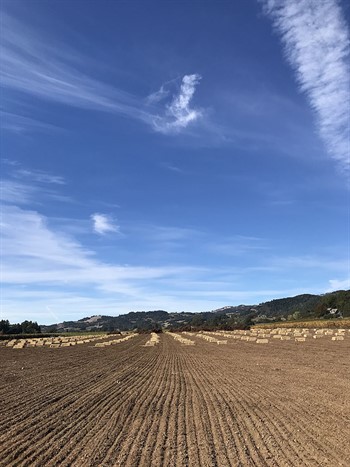 October 28, 2018
October 28, 2018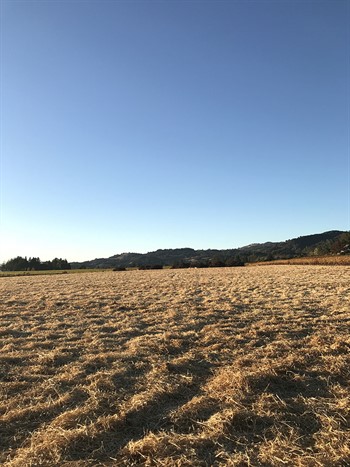
November 5, 2018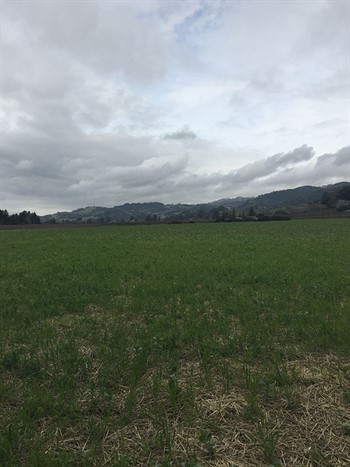
February 24, 2019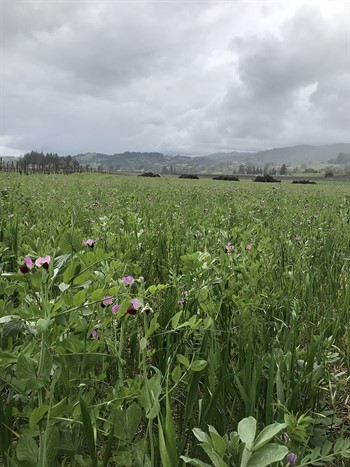
April 2, 2019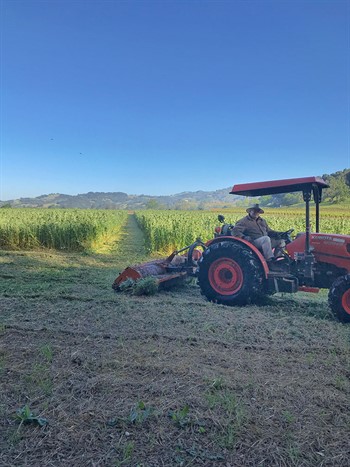
May 1, 2019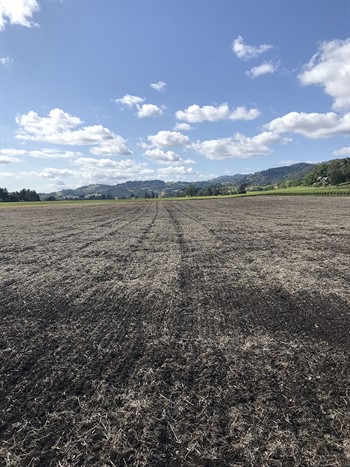
May 17, 2019 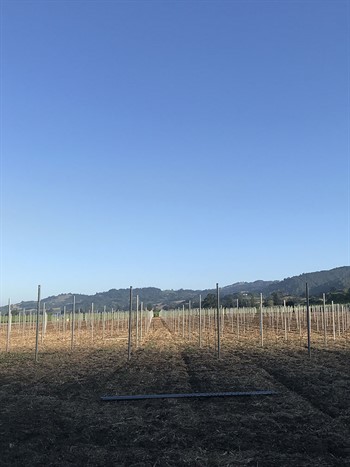
June 18, 2019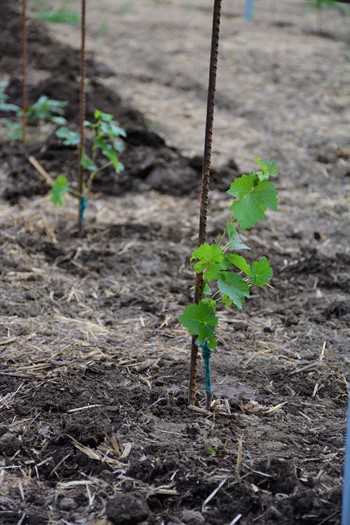
July 8, 2019



